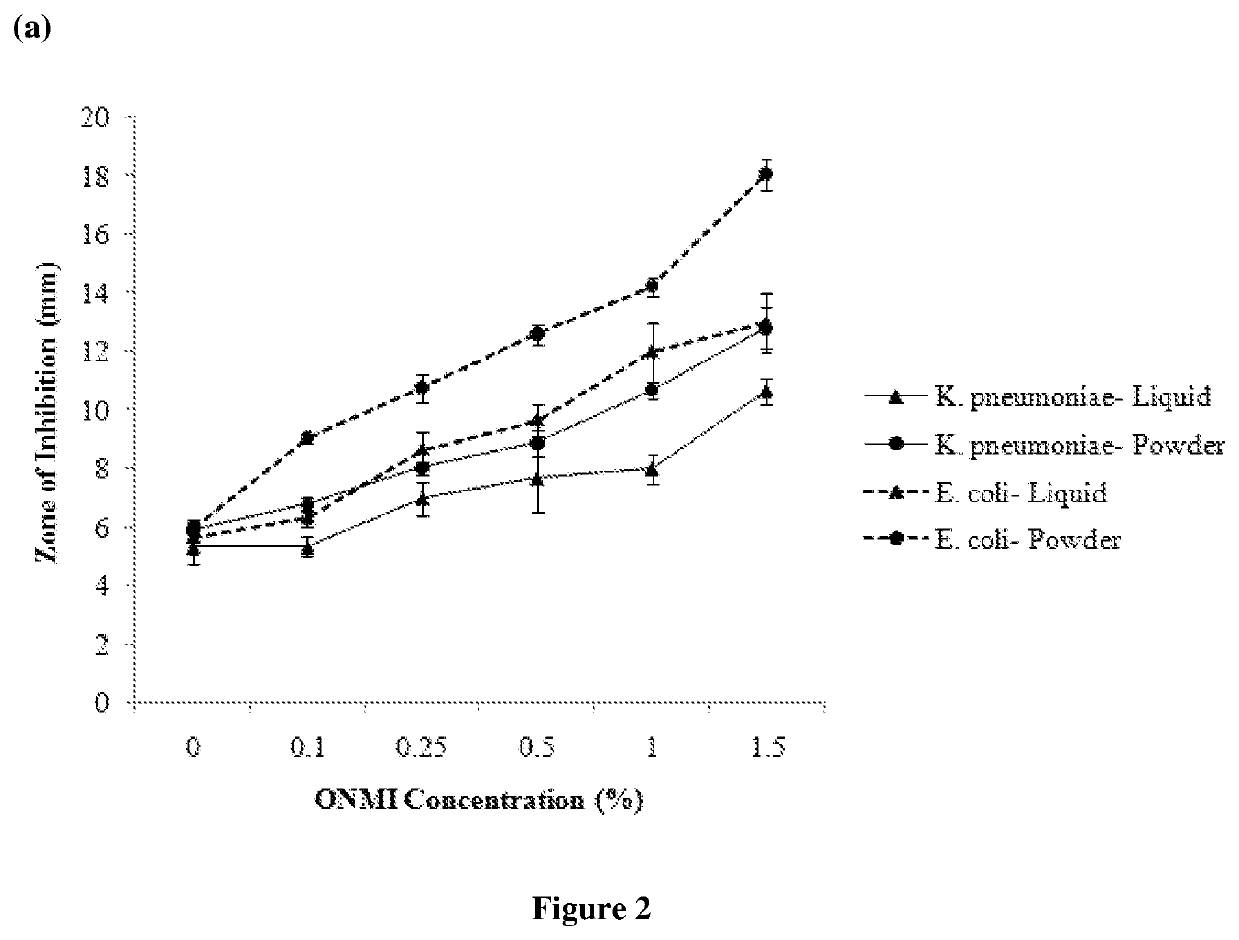An organic natural microbial inhibitor
a technology of organic microbial inhibitors and organic substances, applied in the direction of biocide, meat/fish preservation using chemicals, disinfectants, etc., can solve the problems of human health detrimen
- Summary
- Abstract
- Description
- Claims
- Application Information
AI Technical Summary
Benefits of technology
Problems solved by technology
Method used
Image
Examples
example 1
(i) Upstream Process Parameters
[0026]A microbial consortium comprising of two lab-adapted microbial strains—Acetobacter aceti NCIM 2094 and Lactobacillus delbrueckii NCIM 2365—were used for co-fermentation carried out at 45±2° C. on a synthetic medium with following composition as described below.
Components% w / vGlucose 18%Yeast extract 0.8%Potassium dihydrogen phosphate 0.12%Diammonium hydrogen phosphate 0.2%Manganese sulphate0.0002%Cobalt chloride0.0005%Magnesium sulphate 0.001%Sodium chloride 0.001%Ferrous sulphate0.0005%
[0027]Medium without glucose was heat sterilized at 121° C. and 15 psi for 25 min in an autoclave. Glucose was sterilized separately at 115° C. for 15 min and added aseptically to rest of the medium. All fermentation studies were carried out in 50 L stirred-tank, Stainless Steel (S.S.) bioreactors. Sterile air was flushed at 0.3 L / min into the headspace of the reactor using a 0.2 nm pore sized PTFE filter (Axiva® 200050 RI, AXIVA Sichem Biotech Pvt. Ltd., Indi...
example 2
(ii) In-Process Monitoring of Microbial Growth and Product Yield
[0028]The cell growth during fermentation was measured in terms of optical density using UV-Vis spectrophotometer at a wavelength of 600 nm, in 3 mL of cuvettes. For dry cell weight estimation, 10-15 mL of fermentation broth was centrifuged at 10,000 rpm for 10min in a pre-weighed empty falcon tube and dried at 60° C. under vacuum till constant weight was achieved. The dry weight of cells was calculated from the substitution of final falcon weight containing cells with the pre-weighed empty falcon weight.
[0029]Yields of the organic acids formed were analyzed in the in-process samples as well as finished product samples by High-Performance Liquid Chromatography (HPLC) based method. Analysis of organic acid content involved initial sample preparation, analysis and calculations. Around 0.1 g of test sample was dissolved in 100 mL of HPLC water. Degassing was performed with an ultra-sonicator to prepare the test sample vial...
example 3
(iii) Downstream Processing and Product Recovery
[0033]As the maximal production of organic acids and complete utilization of glucose was achieved within 84 h of fermentation, a typical production batch was terminated between 84-90 h of fermentation. Further filtration was performed through 0.3 to 0.4-micron size cloth filters in a plate and frame filtration assembly. The filtered product was collected in collection tanks, sterilized and vacuum evaporated at 65° C. temperature. The sterilized product was then dispensed in bottles aseptically. After evaporation, the product will be in liquid form with organic acids (65-67%) and moisture (33-35%). Further, the calcium fortified liquid product will be spray dried at a temperature of 285° C. to produce powder form of organic natural microbial inhibitor. It is a combination of naturally produced organic acids, which includes acetic acid (58-60%), lactic acid (13-15%), propionic acid (5-6%) and other organic acids (2-3%) and calcium (20-22...
PUM
 Login to View More
Login to View More Abstract
Description
Claims
Application Information
 Login to View More
Login to View More - R&D
- Intellectual Property
- Life Sciences
- Materials
- Tech Scout
- Unparalleled Data Quality
- Higher Quality Content
- 60% Fewer Hallucinations
Browse by: Latest US Patents, China's latest patents, Technical Efficacy Thesaurus, Application Domain, Technology Topic, Popular Technical Reports.
© 2025 PatSnap. All rights reserved.Legal|Privacy policy|Modern Slavery Act Transparency Statement|Sitemap|About US| Contact US: help@patsnap.com



